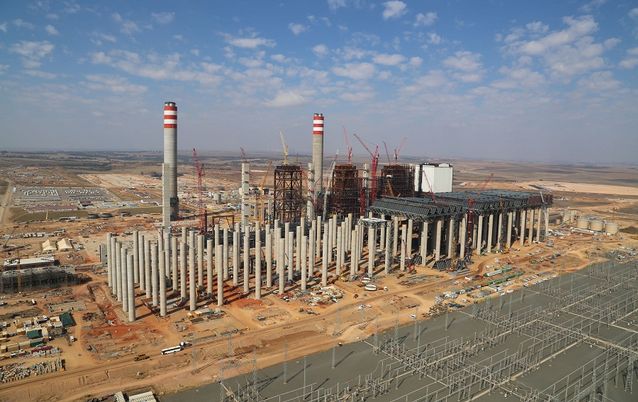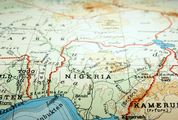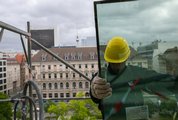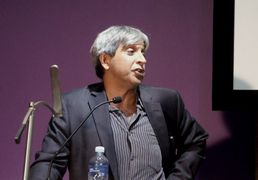ELECTRICITY alters lives, shapes economies, changes cultures and drives development. If the bright future envisaged for the African continent is to become a reality, a stable power landscape is needed, together with an adequate and well-thought out mix of generation technologies.
Africa is poised for unprecedented transformation in the next 40 years. Many African countries, despite falling oil and commodity prices, are likely to remain among the world’s fastest-growing economies.
Abundant natural resources, new markets, and some of the most promising gas finds in the world are increasingly being matched with improving stability, growing middle and consumer classes, and increasing urbanisation.
Given these socioeconomic factors, along with private sector and government interest in expanding into or increasing trade with growing economies, the region is poised to leap forward — provided the infrastructure and power it needs are put in place.
But powering up is not that simple. Large-scale, base-load power projects can take years to design, develop and bring online. Regional power solutions require co-operation across governments and investors. The push for sustainability influences planning decisions, while capital flows are constrained by a range of factors.
So what should Africa’s future power mix look like, and more appropriately, how will Africa fund it?
Given the resources available on the continent, gas and coal will be the primary generation technologies. They will provide the base-load capacity needed to support industry’s power needs — and build the excess power reserves that add resilience to the grid. But nuclear technology remains a major component of the future energy plan for Africa.
...
WITH more than 7% of the world’s gas — about 30-trillion cubic metres of potential and proven reserves — Africa’s abundant natural gas reserves represent one of the critical keys for unlocking the continent’s development potential, especially as a relatively cheap and quick solution for generating power that can serve both domestic and industrial use.
Collectively, more than half of the gas that will be available in Africa can be found in Mozambique and Tanzania, which are on track to become the continent’s leading gas suppliers, along with Angola and Nigeria.
SA’s new gas-to-power programme may also lead to investment of about R64bn in the next four to five years, and is intimately linked to Mozambique’s reserves. Storage and other gas-transport infrastructure are critical needs to be tackled to ensure the success of the gas-to-power programme.
Similarly, coal is an important part of the power mix. Modern coal plants can be constructed with advanced technology to ensure they are more efficient, use less water, and reduce emissions. With Black & Veatch, Eskom’s Kusile project has incorporated advanced environmental technology that will ensure a sustainable, cleaner source of electric energy is available for SA and Africa far into the future.
Renewables — wind, solar, biomass and hydro projects — too will contribute vital megawatts for Africa. Already, some of the most cost-competitive photovoltaic projects worldwide are located in the region.
The International Renewable Energy Agency notes in its Africa 2030 report that renewable energy has the potential to quadruple to 22%, compared to today’s level of about 5%.
With the potential for rapid development and scalability, abundant solar energy potential (as much as 10 terawatts) and large wind resources in the eastern, northern and southern regions of Africa may provide up to one-quarter of electricity by 2040. SA’s Renewable Energy Independent Power Producers Programme already represents one of renewable energy’s successes.
A continued push towards electrification, funding constraints, advances in technology, and an increased focus on sustainability are also driving a continued shift towards the inclusion of distributed generation (generally categorised as generation less than 20MW).
These smaller-scale projects offer fewer capital requirements and a quick path to getting much-needed power on line.
Increasingly, African power blocs are also talking greater regional power pooling and integration. The Southern African Power Pool (SAPP) has an installed capacity of 58.3 gigawatts (GW); and SA alone provides 44GW — or 75% — of total megawatts.
SAPP’s electricity demand is forecast to increase from 53.7GW to 77.7GW by 2018, and represents a transnational opportunity for pooling power resources.
Further potential exists as Mozambique and SA work together to facilitate the export of gas from the Rovuma Basin to meet demand across geographies.
Securing investment financing is Africa’s greatest challenge — and a steady flow of capital is crucial to continued energy expansion. New build and operating plant spend estimates suggest $75bn a year — 10% of Africa’s gross domestic product — is needed to close Africa’s critical energy gap.
The Economist Corporate Network reports that of the $93bn of capital invested in Africa from 2009-14, the World Bank contributed 22% ($20bn) and the Development Bank of SA and the African Development Bank each contributed 18% — or $16.5bn and $16.2bn — respectively. That’s nearly 60% of total foreign direct investment capital invested in Africa in the six-year period. It’s an indication of the financial limits to, and sources of, investment.
...
GIVEN the condition of most sovereign treasuries, infrastructure funding will need to involve public and private funds. Yet, the needs and business cultures of each country within Africa are different and present their own set of challenges and opportunities.
Securing private sector investment requires co-ordinated project-development and execution efforts, supported by a vast network of seasoned, well-capitalised participants. Africa’s future is the capabilities of its people, not its resources. Achieving a balanced power mix is critical to reshaping economies fundamentally.
Widespread economic resilience and prosperity can emerge only with reliable power as its backbone. A balanced energy portfolio that includes a mix of small and large projects, and diverse technologies, will be critical to achieving this goal.
• Daniel is Black & Veatch’s chief financial officer and vice-chair of the US president’s Advisory Council on Doing Business in Africa

Large-scale, base-load power projects can take years to bring online. Regional power solutions require co-operation across governments and investors. Given the resources in Africa, gas and coal will be the primary generation technologies. Picture: SUPPLIED
ELECTRICITY alters lives, shapes economies, changes cultures and drives development. If the bright future envisaged for the African continent is to become a reality, a stable power landscape is needed, together with an adequate and well-thought out mix of generation technologies.
Africa is poised for unprecedented transformation in the next 40 years. Many African countries, despite falling oil and commodity prices, are likely to remain among the world’s fastest-growing economies.
Abundant natural resources, new markets, and some of the most promising gas finds in the world are increasingly being matched with improving stability, growing middle and consumer classes, and increasing urbanisation.
Given these socioeconomic factors, along with private sector and government interest in expanding into or increasing trade with growing economies, the region is poised to leap forward — provided the infrastructure and power it needs are put in place.
But powering up is not that simple. Large-scale, base-load power projects can take years to design, develop and bring online. Regional power solutions require co-operation across governments and investors. The push for sustainability influences planning decisions, while capital flows are constrained by a range of factors.
So what should Africa’s future power mix look like, and more appropriately, how will Africa fund it?
Given the resources available on the continent, gas and coal will be the primary generation technologies. They will provide the base-load capacity needed to support industry’s power needs — and build the excess power reserves that add resilience to the grid. But nuclear technology remains a major component of the future energy plan for Africa.
...
WITH more than 7% of the world’s gas — about 30-trillion cubic metres of potential and proven reserves — Africa’s abundant natural gas reserves represent one of the critical keys for unlocking the continent’s development potential, especially as a relatively cheap and quick solution for generating power that can serve both domestic and industrial use.
Collectively, more than half of the gas that will be available in Africa can be found in Mozambique and Tanzania, which are on track to become the continent’s leading gas suppliers, along with Angola and Nigeria.
SA’s new gas-to-power programme may also lead to investment of about R64bn in the next four to five years, and is intimately linked to Mozambique’s reserves. Storage and other gas-transport infrastructure are critical needs to be tackled to ensure the success of the gas-to-power programme.
Similarly, coal is an important part of the power mix. Modern coal plants can be constructed with advanced technology to ensure they are more efficient, use less water, and reduce emissions. With Black & Veatch, Eskom’s Kusile project has incorporated advanced environmental technology that will ensure a sustainable, cleaner source of electric energy is available for SA and Africa far into the future.
Renewables — wind, solar, biomass and hydro projects — too will contribute vital megawatts for Africa. Already, some of the most cost-competitive photovoltaic projects worldwide are located in the region.
The International Renewable Energy Agency notes in its Africa 2030 report that renewable energy has the potential to quadruple to 22%, compared to today’s level of about 5%.
With the potential for rapid development and scalability, abundant solar energy potential (as much as 10 terawatts) and large wind resources in the eastern, northern and southern regions of Africa may provide up to one-quarter of electricity by 2040. SA’s Renewable Energy Independent Power Producers Programme already represents one of renewable energy’s successes.
A continued push towards electrification, funding constraints, advances in technology, and an increased focus on sustainability are also driving a continued shift towards the inclusion of distributed generation (generally categorised as generation less than 20MW).
These smaller-scale projects offer fewer capital requirements and a quick path to getting much-needed power on line.
Increasingly, African power blocs are also talking greater regional power pooling and integration. The Southern African Power Pool (SAPP) has an installed capacity of 58.3 gigawatts (GW); and SA alone provides 44GW — or 75% — of total megawatts.
SAPP’s electricity demand is forecast to increase from 53.7GW to 77.7GW by 2018, and represents a transnational opportunity for pooling power resources.
Further potential exists as Mozambique and SA work together to facilitate the export of gas from the Rovuma Basin to meet demand across geographies.
Securing investment financing is Africa’s greatest challenge — and a steady flow of capital is crucial to continued energy expansion. New build and operating plant spend estimates suggest $75bn a year — 10% of Africa’s gross domestic product — is needed to close Africa’s critical energy gap.
The Economist Corporate Network reports that of the $93bn of capital invested in Africa from 2009-14, the World Bank contributed 22% ($20bn) and the Development Bank of SA and the African Development Bank each contributed 18% — or $16.5bn and $16.2bn — respectively. That’s nearly 60% of total foreign direct investment capital invested in Africa in the six-year period. It’s an indication of the financial limits to, and sources of, investment.
...
GIVEN the condition of most sovereign treasuries, infrastructure funding will need to involve public and private funds. Yet, the needs and business cultures of each country within Africa are different and present their own set of challenges and opportunities.
Securing private sector investment requires co-ordinated project-development and execution efforts, supported by a vast network of seasoned, well-capitalised participants. Africa’s future is the capabilities of its people, not its resources. Achieving a balanced power mix is critical to reshaping economies fundamentally.
Widespread economic resilience and prosperity can emerge only with reliable power as its backbone. A balanced energy portfolio that includes a mix of small and large projects, and diverse technologies, will be critical to achieving this goal.
• Daniel is Black & Veatch’s chief financial officer and vice-chair of the US president’s Advisory Council on Doing Business in Africa





















Change: -1.54%
Change: -1.49%
Change: -2.02%
Change: -0.73%
Change: -4.01%
Data supplied by Profile Data
Change: 0.10%
Change: -0.13%
Change: -1.54%
Change: 0.00%
Change: -0.39%
Data supplied by Profile Data
Change: 1.00%
Change: 0.30%
Change: 0.74%
Change: 0.89%
Change: 0.12%
Data supplied by Profile Data
Change: -1.93%
Change: -3.62%
Change: -3.91%
Change: -3.32%
Change: -1.95%
Data supplied by Profile Data